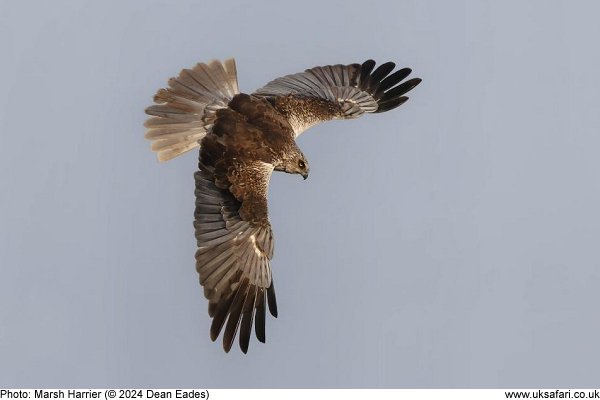 Marsh Harriers
Marsh HarriersIdentify It > Bird Section > Birds of Prey Section > Marsh Harriers >

Scientific name: Circus aeruginosus
Size: Approx 55cm. Wingspan up to 140cm
Distribution: The largest numbers of Marsh Harriers are found in the east of England, but they can be seen in other parts of the UK, especially coastal areas
Months seen: All year round
Life Span: Up to 13 years, but typically around 6 years (source BTO)
Habitat: Farmland and wetlands
Food: Mostly mice, voles and small water birds
Special features: Male Marsh Harriers have greyish plumage on the middle section of the wings, and black 'fingered' wing tips. The breast and belly are a pale brown colour, as are the shoulders and back. The head and tail are a greyish colour. Female Marsh Harriers have mostly brown plumage but with cream coloured plumage on the top of the head. The females are larger than males. The legs in both sexes are yellow.
Marsh Harriers are slightly larger than Buzzards, but not as rotund in the body. In flight the Marsh Harrier makes a slight 'V' shape with its raised wings, whereas the Buzzard keeps its wings flat.
 Related Pages
Related Pages

 Popular Pages
Popular PagesAmphibians, Bats, Badgers, Beetles, Birds, Birds of Prey, Bumble Bees, Butterflies, Caterpillars, Climate Change, Deadly Spiders, False Widow Spiders, Frogs, Funny, Garden Spiders, Glow-Worms, Hedgehogs, House Spiders, Owls, Spiders, Toads, What's Out Now?
Copyright © 2024 G. Bradley UK Safari. All rights reserved | About Us | Links | Advertise | Contributors